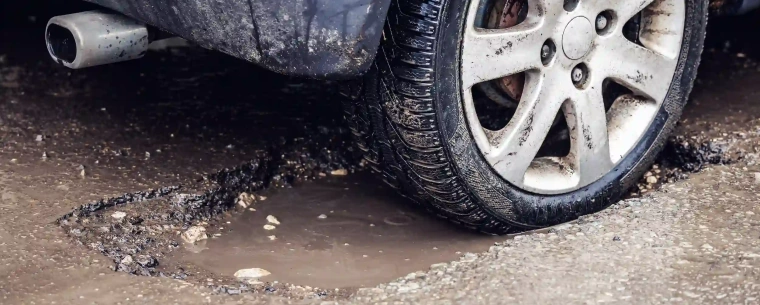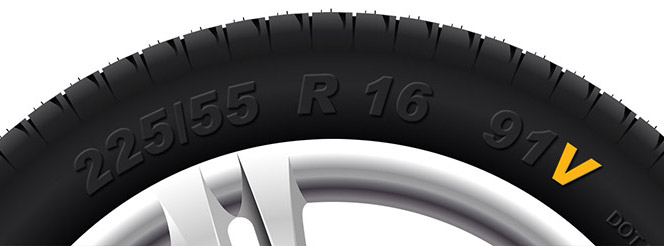The Impact Potholes Can Have on Your Car
Published on: Monday, 22 January 2024 | Author: Jack Dreyer
Potholes are the scourge of the nation’s cars – we are, in fact, quite certain that potholes show up in a lot of cars’ nightmares. While they’re quite clearly unpleasant to drive over, potholes can have really damaging effects on lots of car components.
Let’s look at what gets most affected by potholes.
1.) Your tyres
Your tyres, being the only point of contact with the road, go through a lot of impacts every time you drive. In an ideal world with smooth tarmac and clean roads, your tyres last forever – but the real world puts a real strain on your tyres.
The rubber that your tyres are made of needs to be grippy enough to grip onto the road, but not so grippy that you have to use significantly more fuel to move your car – so there’s always a balancing act. Over time, the tyre treads wear down through simply moving and turning, but debris & potholes can cause large chips in your tyre faces (or, in the worst cases, near the sidewall).
If left unchecked, these chips can grow into bulges that can lead to a blow-out.
2. Suspension
Your suspension exists to reduce the shocks of going over uneven surfaces. Before the invention of inflated rubber tyres, wheels were just covered in a strip of metal – so riding a carriage was extremely uncomfortable. Eventually, the strips of metal were replaced with strips of solid rubber, then with inflatable rubber tubes, then with the modern form of pneumatic tyres we know and love today.
Rubber tubes and pneumatic tyres help to cushion impacts, but suspension exists to do so further – and not just for reasons of comfort!
While your suspension is designed to handle shocks (hence the name “shock absorber” for one of the components), they will wear down a lot faster if they have to handle more frequent shocks. In some extreme instances, a deep pothole at speed can outright break a suspension component like the coil springs, shock absorbers, or struts.
This isn’t necessarily an immediate safety issue because you will be able to continue driving, but the suspension doesn’t usually break on its own.
3. Steering
The way that the steering wheel actually steers the car relies on a number of surprisingly fiddly components. They’re designed to be tough, certainly, but there’s always a balance between durability and usability – relying on ultra-tough steering components (like, say, a tractor does) usually results in sluggish steering.
The alignment of your steering is known as ‘tracking’, and this can be thrown out of alignment quite easily by hitting potholes (or even hitting kerbs). This then leads to a situation where the two front tyres are rolling in different directions – which, in turn, tends to make the steering wheel shudder as the steering is pulled left & right really quickly.
At slow speeds and with minor misalignment, this is something that’s more disconcerting than it is dangerous, but the inaccuracy in steering it creates can actually be quite dangerous at high speeds like those on a motorway.

4. Engine mounts
Your car’s engine is mounted within the engine bay on “engine mounts” – which are slightly shock-absorbing components that help avoid damage to the engine itself with impact like hitting a kerb or small pothole. Over time, however, potholes can wear down the shock absorbing elements of the engine mounts and can, in some extreme cases, cause the engine components to crack with impacts.
Making sure your suspension is shipshape and replacing some minor shock components is a reasonably trouble-free procedure. Replacing a cracked engine, on the other hand, can sometimes prove to be more costly than the car!
Keep your car in great shape
While we can do as much as possible to avoid potholes, there are always going to be those potholes that sneak up on us. But if you ensure your car’s regularly checked, maintained, and serviced by the experts at your local Tyre Pros centre, then you’ll save yourself a lot of headaches further down the line!




